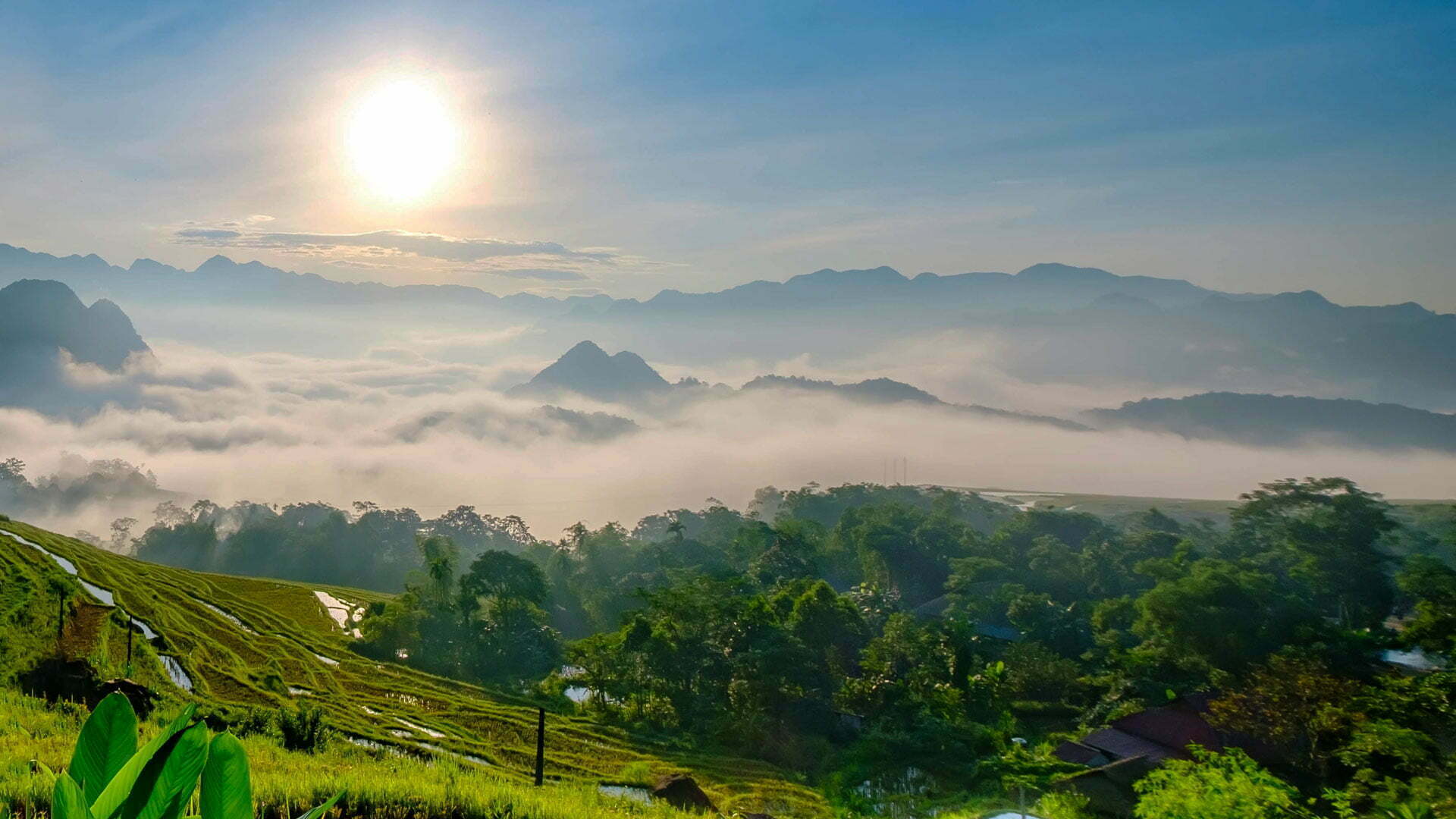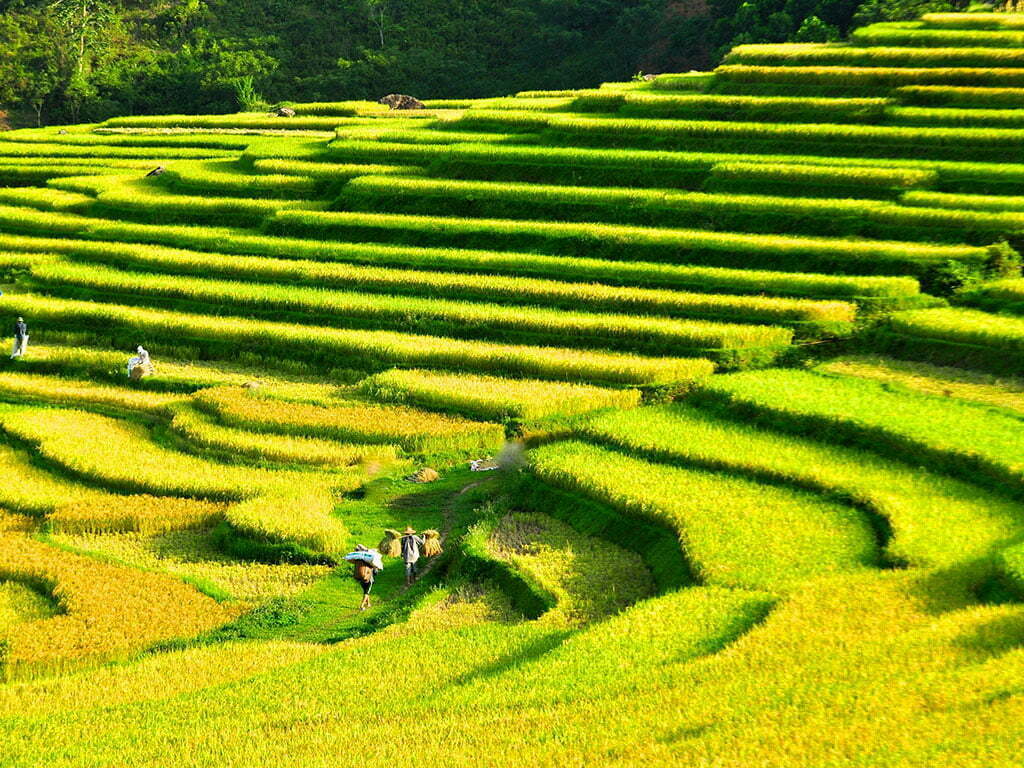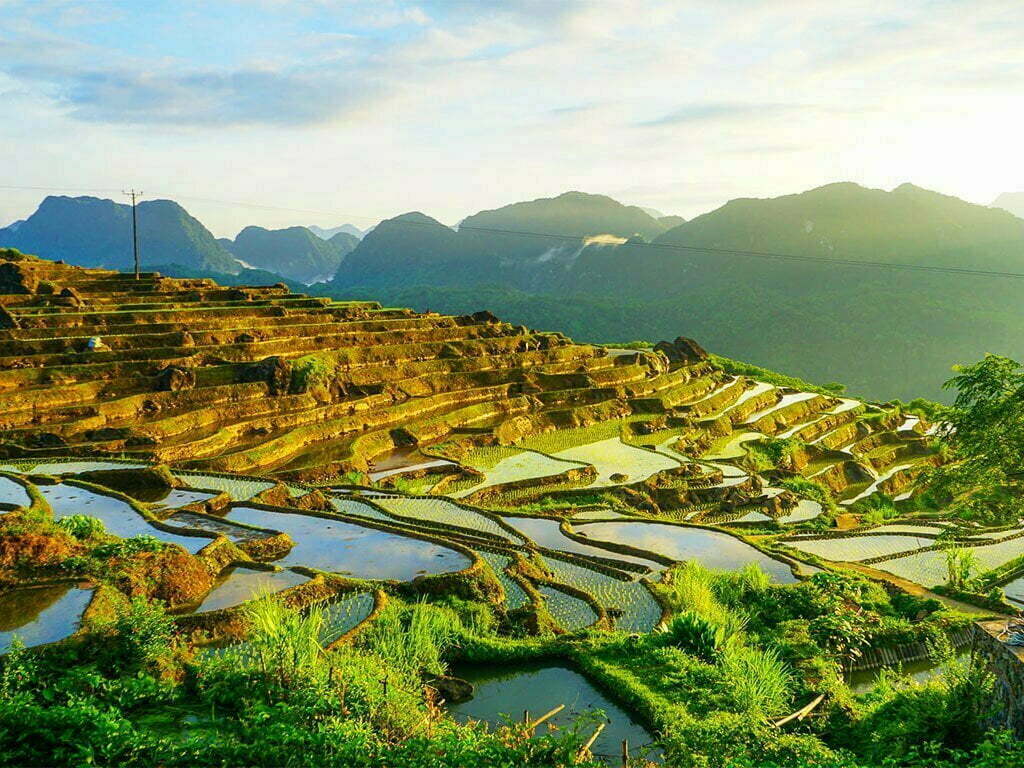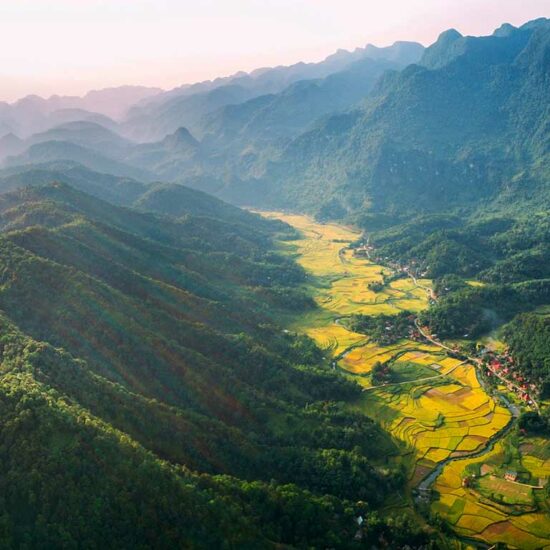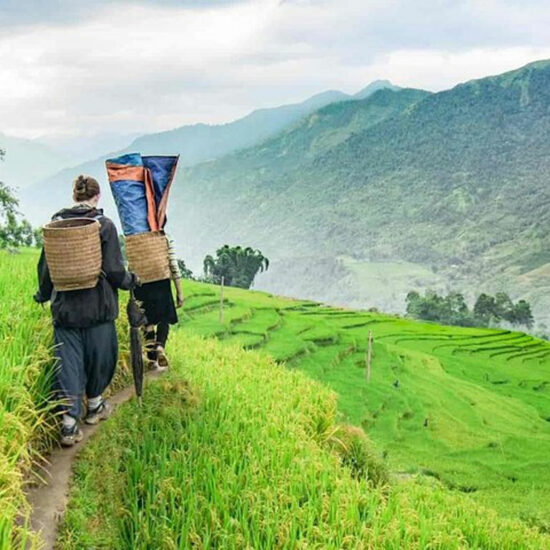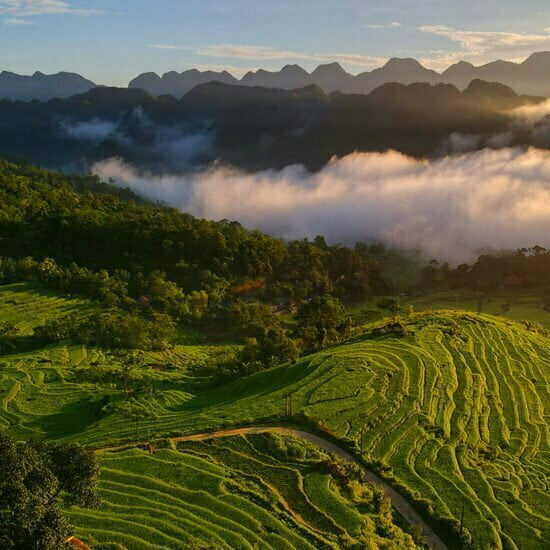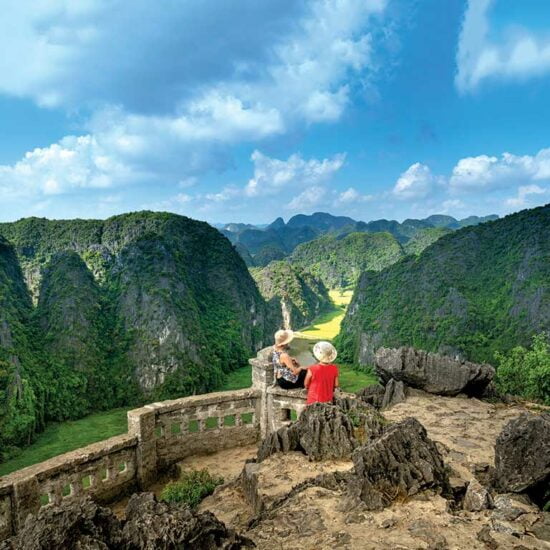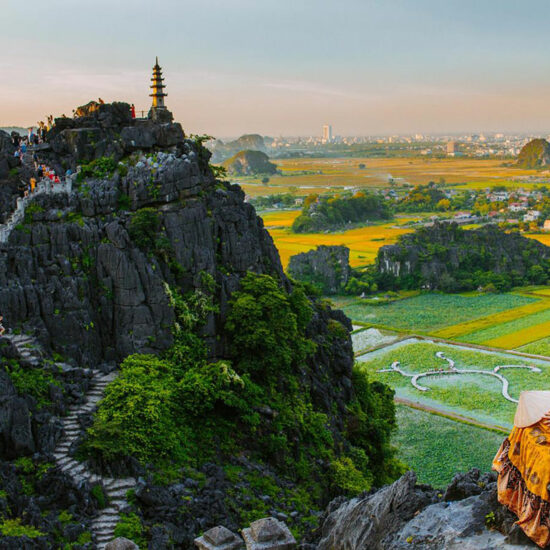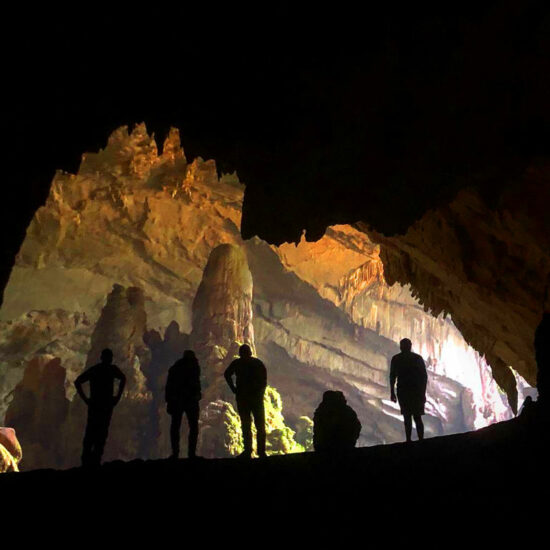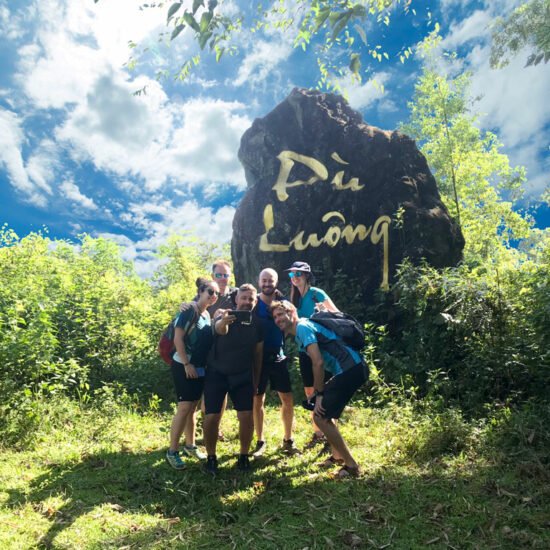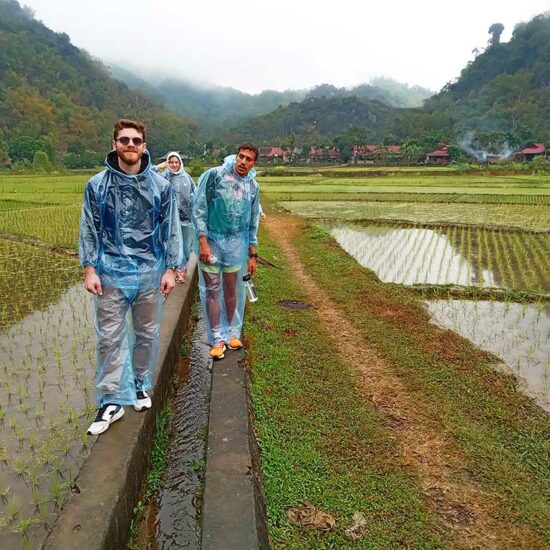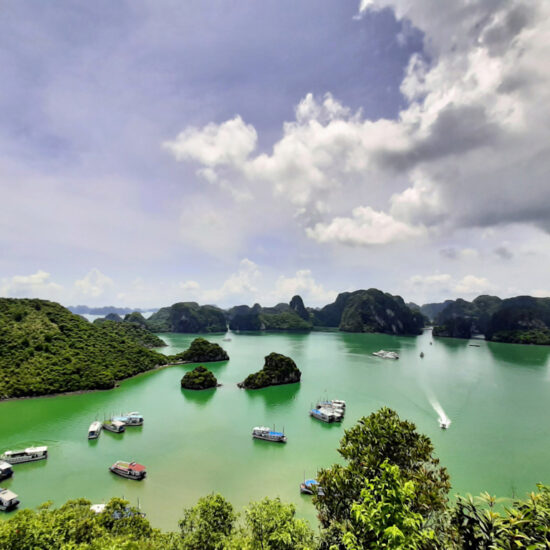Pu Luong Nature Reserve was established in 1999, it is approximately 180km South West of Vietnam’s Capital, Hanoi. It is bordered by Hoa Binh in the North and the National Park of Cuc Phuong in the South. It is included in both districts of Quan Hoa and Ba Thuoc in Thanh Hoa province. The total area of the Reserve is 17,662 hectares and 2/3 of the reserve is primarily tropical forest. It has the biggest forest area on Karts of Northern Vietnam. 3 types of forest are present in Pu Luong: Jungle, Mountain and Bamboo Forest. On the total area, only 1/3 is an inhabited area, the rest is a protected and preserved area.
Pu Luong Topography
The Pu Luong Nature Reserve is decorated with limestone landscape, mountains covered by primary forest and jungle. The mountain range takes a big part of the land and allows to create some hidden valleys in between.
Pu Luong in local language means “The highest peak in the area” and culminates at a height of 1700m. Nothing to compare with the high mountains of the far north in Lao Cai, Lai Chau or Ha Giang, however, the more reasonable scale in Pu Luong allows an easier access to a larger group of people.
Besides, Pu Luong is also called as “the small Sapa” due to rice field terraces sliding down the hills or in the valleys. As the altitude is lower, it seems less impressive as the one of Sapa but it finally creates a closer connection to the nature. Especially, each rice ponds are seperated by random stone walls in different sizes creating wilder shapes of beauty. The rice fields are disseminated in different areas.
On the east side of the Reserve, to fulfill and amplify the beauty and peacefulness of the area, the Ma river is crossing the valley, meandering between karst peaks. The local getting benefits of this natural resource to fish and irrigate the rice fields and different cultivations.
Some small streams, that can grow during the rainy season, can be found in many places inside the jungle creating some small waterfalls. Hieu village is the perfect example with the multi stairs waterfall along the village.
Inhabitants of Pu Luong Nature Reserve
When you will first arrive to Pu Luong Nature Reserve, it is easy to think that no minorities are living here. Actually, Pu Luong is the living place of ethnic Muong and Thai people. The majority is represented by the Black Thai, one of the biggest minorities in all Vietnam.
They live in traditional wooden stilt house disseminated in small villages or isolated in the mountains. The first floor usually uses as a storage and place for the animals (buffalo, pigs…). The second floor, the living area, is a space divided in two. The biggest room is to take meals, welcome friends and sleep.
There is no separation inside the house, it is an open space. The second part is for the kitchen, with a central place for fire.
They don’t wear the traditional costume daily so it is impossible to recognize them immediately. They still follow meticulously all the rituals and customs of the minority. They will only wear the costume for special ceremony as wedding, funerals or festivals. They mainly live from agriculture (rice, corn and other vegetables). The Thai people have invented the ingenious system of bamboo waterwheels to irrigate the fields, that you can admire along the Ma river or on the way to Hieu village (depending on season).
Villages
There is a total of 24 villages in the Reserve. Only few of them have been impacted by the tourism, modifying the aspect.
Don Village is the most developed one and can be considered as the epicenter of the touristic area. His location is very special with stunning view on the rice fields and the mountain range. You will find every kind of accommodations in the village from the traditional homestay to higher standards hotels.
Hieu village has also changed in last 3 years with homestays blooming all over the village. This is due to the stream along the village creating a multi-level waterfall that allows water hike in the dry season or a swim with the friendly locals.
Kho Muong is probably the most special one as it is accessible only by motorbike or walking. Lost in a hidden valley, home of a circular mountain range with rice paddies and the largest cave in the Reserve, the “Bat Cave”.
Bang village is at the entrance of the Reserve (when arriving from Mai Chau) and very charming with ancient stilt house and friendly locals always ready to invite you for a cup of tea or a glass of “Ruou” (traditional rice wine).
Son Ba Muoi is located at the extreme south of the Reserve; on top of Pha He, Pha chien mountain range. Not yet fully developed, tourists love to get there to feel the cool atmosphere and the untouched nature with amazing view.
Other villages, scattered in the Reserve and less known, deserved a visit to immerse yourself in the local culture.
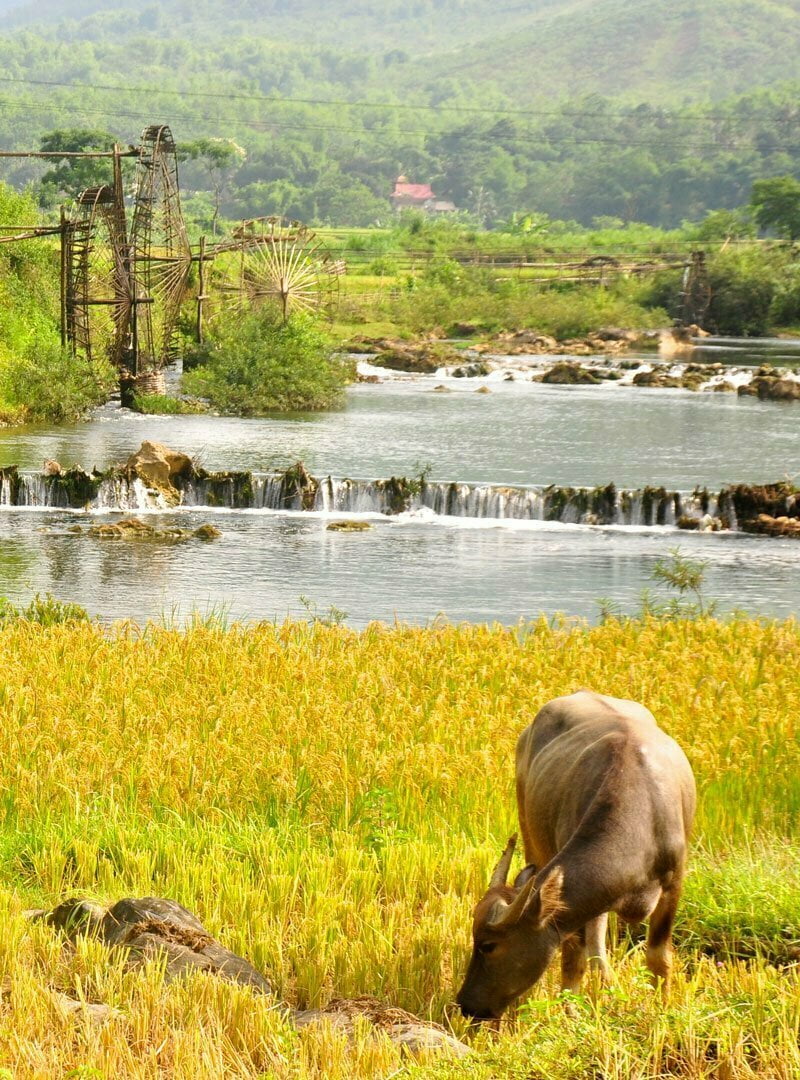
Location and accessibility
Located south west of Hanoi, at about 180km, Pu Luong Nature Reserve is nowadays easily accessible. It is quite central location between some famous areas. Only 40 km from Mai Chau and 140km from Ninh Binh – the Halong bay on land.
There are 3 mains roads to reach the Reserve. For those who wants to combine with a visit of the magnificent valley of Mai Chau, they will take the direction of Hoa Binh by the QL6, pass through Mai Chau and start the mountain road by Xa Phu Le village on the QL15c until arriving to Bang village.
The fastest and most direct route is via the Ho Chi Minh Road. This is the route most shuttle buses take to reach Pu Luong Nature Reserve, taking about 4.5 hours, including a break along the way.
The longest route but probably the most beautiful one is to pass by Son Ba Muoi. Starting direction of Mai Chau, you will take a left at the DT440 until reaching the center of the Reserve. Recommended for avid motorbike riders or having a private car with free time.
For more information, you can see our articles describing in more details the different possibilities to reach the reserve
See more:
Weather in Pu Luong Nature Reserve
As every area in the Northern Vietnam, Pu Luong Nature Reserve has four seasons. Basically, it is always a good time to visit the Reserve even if some periods are more suitable for activities and to appreciate the full potential Pu Luong has to offer.
Winter time, from December to March, it can be pretty cold, mostly at the night time. It can also be foggy with a light rain that can disturb the activity and hide the beautiful view. It won’t happen everyday and the sunny days will be the perfect time to enjoy some long trekking in the reserve.
March and April will be more spring time. Temperature get higher (around 25°C in daytime even if some falls to 15°C can happen) so it makes it very enjoyable for outdoor activities. The weather at this period is very changing. You can have a week of sun or a week of fog and rain. A small raincoat and good shoes will solve any concerns for activities.
May to September, the temperature will get very high (particularly in June due to the high humidity). The sun will enlighten most of your days. Some massive storms can illuminate the sky at night or at the end of the day. It is very spectacular and like a natural firework to contemplate from the balcony of your room or from the terrace of the hotel. Benefit of being in the mountains is that temperatures always get cooler at night.
October and November are the best time to visit Pu Luong Nature Reserve. Temperatures are stable around 25°C, the blue sky is omnipresent every day. It is time to admire the yellow rice fields and the farmers harvesting.
The rice fields in Pu Luong Nature Reserve
Particularity of the mountainous area of Pu Luong is that there are two crops a year. This is one reason that tourism has developed very fast, most time of the year you can contemplate the beautiful rice fields between the mirror ones, the lush green ones or the golden ones.
Below, you will find the different seasons to see the rice paddies. It is important to note that the rice culture is also adapting to the climate so it can vary a little bit. Also, the rice in the valley and in the mountains have different rhythm and time of harvest. This is a real asset for Pu Luong Nature Reserve as you can see the people harvesting in some places and have the golden ones in some other areas.
From November to March, this is the time for the fields to rest and regain energy for the next season. The rice fields are fallow and it becomes the land of the buffalos. It will also be like that partly in June after they end to harvest the first crop and before they refill them by water.
From March to mid-April and in July, the rice paddies will be full of water. Beautiful scenery with the mirror style and the reflection of the sky in the water. It can become magical when all elements are combined and even more at sunrise or sunsets.
From mid-April to mid-May and from August to September, the rice is growing and a lush
Green is invaded the fields. In addition to the primary forest and the jungle covering the mountains, it is a cocktail of different shades of green all other the area.
Then from mid-May to June and from October to early November, golden time appear and the farmers start to spread all over the fields with their conical hats to harvest the rice.
Highlights of Pu Luong Nature Reserve

